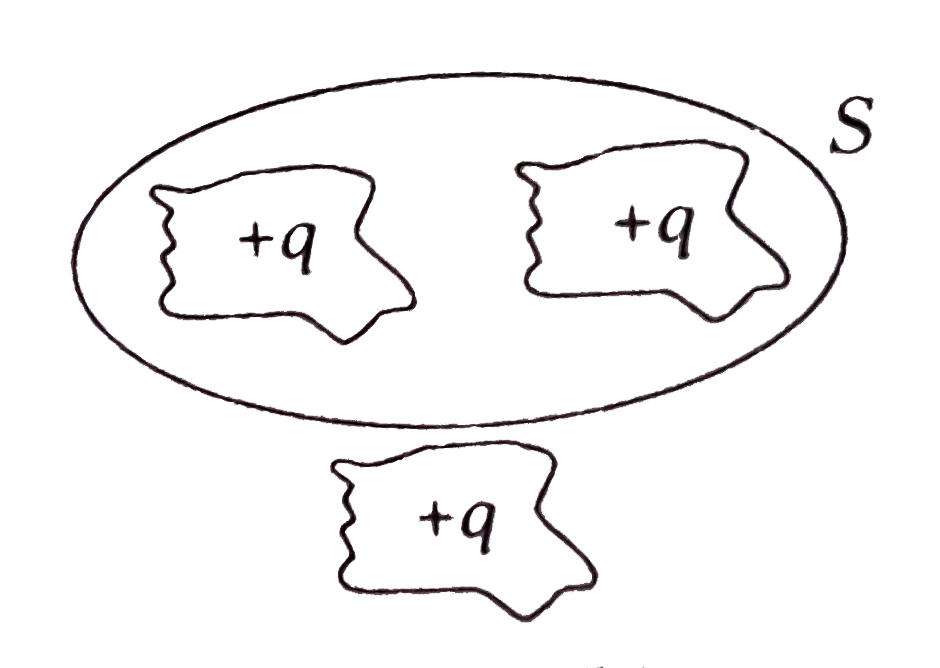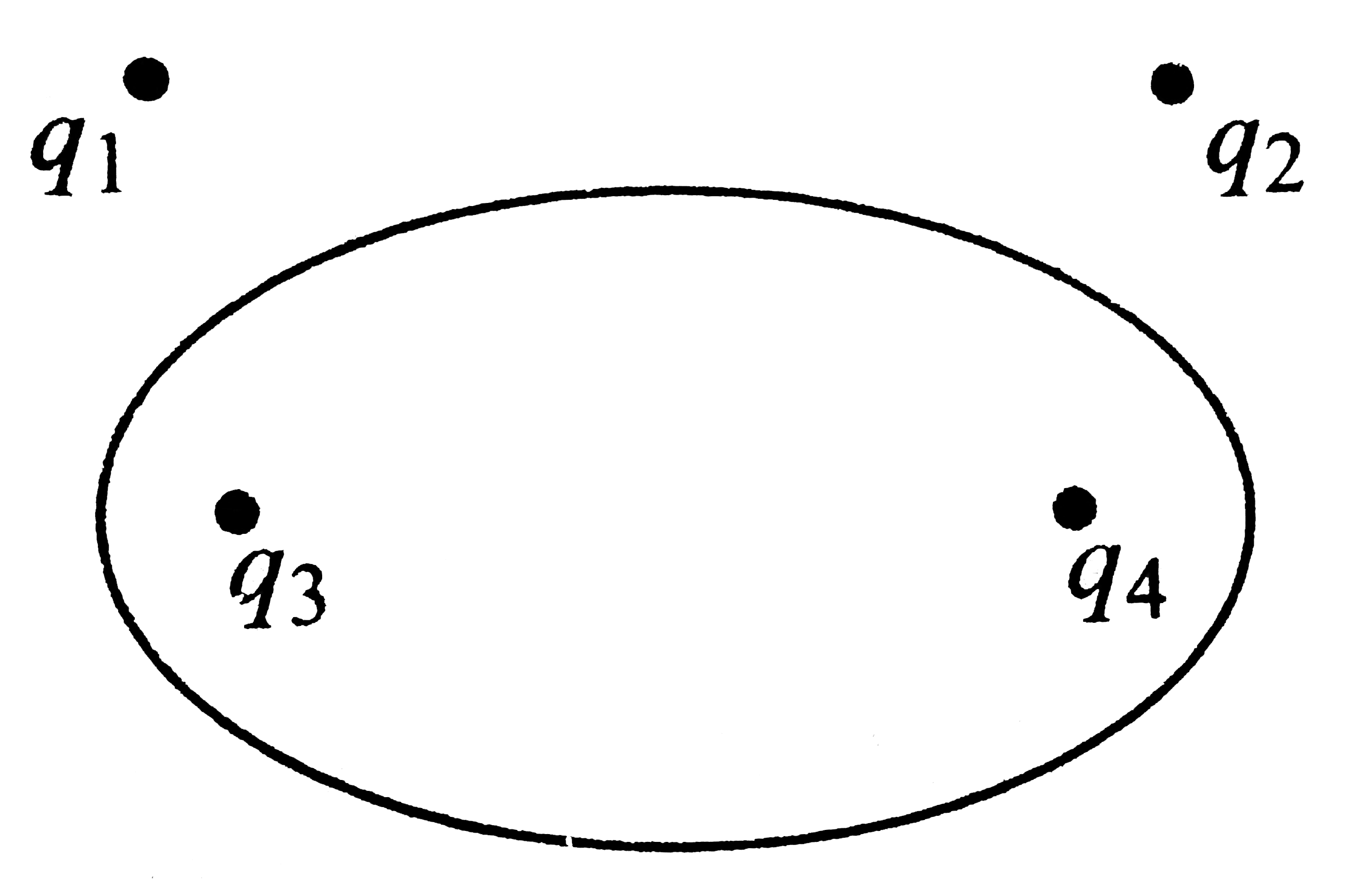Which of the following statements is/are correct?
a. Electric field calculated by Gauss law is the field due to only those charges which are enclosed inside the Gaussian surface.
b. Gauss law is applicable only when there is a symmetrical distribution of charge.
c. Electric flux through a closed surface is equal to total flux due to all the charges enclosed within that surface only.
To determine which statements are correct regarding Gauss's law and electric fields, let's analyze each statement one by one.
Step 1: Analyze Statement A
Statement A: "Electric field calculated by Gauss law is the field due to only those charges which are enclosed inside the Gaussian surface."
Analysis:
Gauss's law states that the electric flux through a closed surface is proportional to the charge enclosed within that surface. However, the electric field at a point can be influenced by both enclosed charges and external charges. Therefore, the electric field calculated using Gauss's law is not limited to just the charges inside the Gaussian surface.
Conclusion: Statement A is false.
Step 2: Analyze Statement B
Statement B: "Gauss law is applicable only when there is a symmetrical distribution of charge."
Analysis:
While Gauss's law is particularly useful for symmetrical charge distributions (like spherical, cylindrical, or planar symmetry), it is not limited to these cases. Gauss's law can be applied to any closed surface regardless of the symmetry of the charge distribution. The key point is that the law relates the electric flux through a closed surface to the charge enclosed, irrespective of symmetry.
Conclusion: Statement B is false.
Step 3: Analyze Statement C
Statement C: "Electric flux through a closed surface is equal to total flux due to all the charges enclosed within that surface only."
Analysis:
This statement is consistent with Gauss's law, which states that the total electric flux through a closed surface is equal to the charge enclosed divided by the permittivity of free space (ε₀). Thus, the electric flux through a closed surface is indeed determined solely by the charges that are enclosed within that surface.
Conclusion: Statement C is true.
Final Summary
- Statement A: False
- Statement B: False
- Statement C: True
Statement A: "Electric field calculated by Gauss law is the field due to only those charges which are enclosed inside the Gaussian surface."
Gauss's law states that the electric flux through a closed surface is proportional to the charge enclosed within that surface. However, the electric field at a point can be influenced by both enclosed charges and external charges. Therefore, the electric field calculated using Gauss's law is not limited to just the charges inside the Gaussian surface.
Statement B: "Gauss law is applicable only when there is a symmetrical distribution of charge."
While Gauss's law is particularly useful for symmetrical charge distributions (like spherical, cylindrical, or planar symmetry), it is not limited to these cases. Gauss's law can be applied to any closed surface regardless of the symmetry of the charge distribution. The key point is that the law relates the electric flux through a closed surface to the charge enclosed, irrespective of symmetry.
Statement C: "Electric flux through a closed surface is equal to total flux due to all the charges enclosed within that surface only."
This statement is consistent with Gauss's law, which states that the total electric flux through a closed surface is equal to the charge enclosed divided by the permittivity of free space (ε₀). Thus, the electric flux through a closed surface is indeed determined solely by the charges that are enclosed within that surface.
- Statement A: False
- Statement B: False
- Statement C: True
Topper's Solved these Questions
- BOOK - CENGAGE PHYSICS ENGLISHCHAPTER - ELECTRIC FLUX AND GAUSS LAWEXERCISE - Subjective12videos
ELECTRIC FLUX AND GAUSS LAW
- BOOK - CENGAGE PHYSICS ENGLISHCHAPTER - ELECTRIC FLUX AND GAUSS LAWEXERCISE - Single Correct40videos
ELECTRIC FLUX AND GAUSS LAW
- BOOK - CENGAGE PHYSICS ENGLISHCHAPTER - ELECTRIC FLUX AND GAUSS LAWEXERCISE - Exercise 2.116videos
ELECTRIC FLUX AND GAUSS LAW
- BOOK - CENGAGE PHYSICS ENGLISHCHAPTER - ELECTRIC CURRENT AND CIRCUITEXERCISE - Interger8videos
ELECTRIC CURRENT AND CIRCUIT
- BOOK - CENGAGE PHYSICS ENGLISHCHAPTER - ELECTRIC POTENTIALEXERCISE - DPP 3.515videos
ELECTRIC POTENTIAL
Similar Questions
Figure shown below is a distribution of charges. The flux of electric field due to these charges through the surface S is
 View Solution
View SolutionFigure shown below is a distribution of charges. The flux of electric field due to these charges through the surface S is
 View Solution
View SolutionWhich of the following statement is correct ? If E = 0 , at all points of a closed surface.
a. the electirc flux through the surface is zero.
b. the total charge enclosed by the surface is zero.View SolutionHow does the electric flux due to a point charge enclosed by a spherical Gaussian surface get a affected when its radius is increased ?
View SolutionFigure shows four charges q1,q2,q3,andq4 fixed is space. Then the total flux of the electric field through a closed surface S, due to all the charges, is
 View Solution
View SolutionThe Gaussian surface for calculating the electric field due to a charge distribution is
View SolutionA capacitor of capacitance C is charged to a potential V. The flux of the electric field through a closed surface enclosing the capacitor is
View SolutionA charge Q is enclosed by a Gaussian surface. If surface area is doubled and charge Q is tripled then the outward electric flux will
View SolutionA charge Q is enclosed by a Gaussian spherical surface of radius R. If the radius is doubled, then the outward electric flux will
View SolutionIf the electric flux entering and leaving an enclosed surface respectively is ϕ1 and ϕ2, the electric charge inside the surface will be
View Solution

